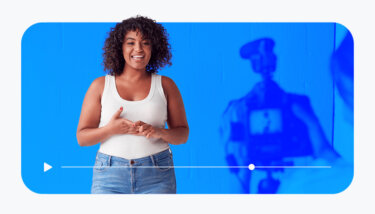You’ve got a great audience who engage with your videos, but how do you take that next step and add a video paywall without alienating them? We’re here to show you how to successfully create your own video paywall, empowering you to deliver value and keep your paying audience happy.
This is the key to generating real, recurring revenue and turning your video content into a business with endless potential.
By the time you reach the end of this article you’ll be ready to set up your own video paywall, and be armed with how to overcome the common challenges creators tend to face at this stage of their journey.
What exactly is a video paywall?
A video paywall restricts access to video content by requiring users to pay to watch it. This usually comes in the form of a recurring fee, or as a one-off payment.
Like this example here from Etchr Studio:
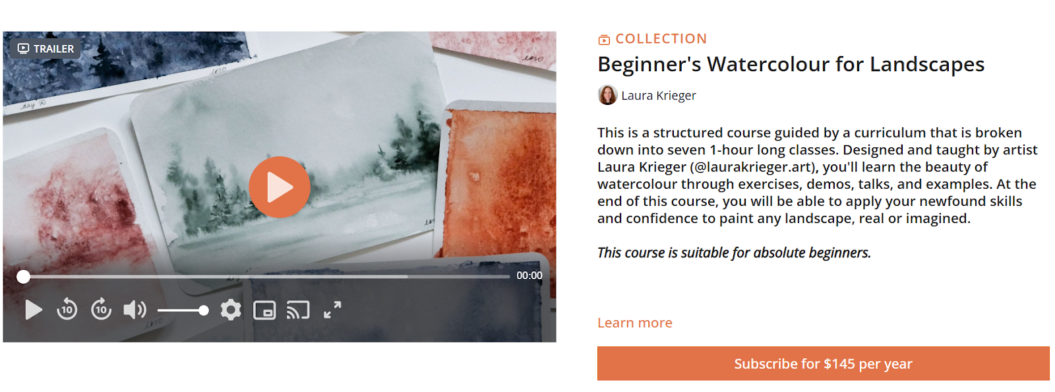
On the outside of the paywall, we can see what this video is all about, and how to unlock access to it. The video itself is behind the paywall, alongside the rest of the content available in their catalog.
Or you might see videos with a locked symbol to indicate that they’re behind a paywall like this:
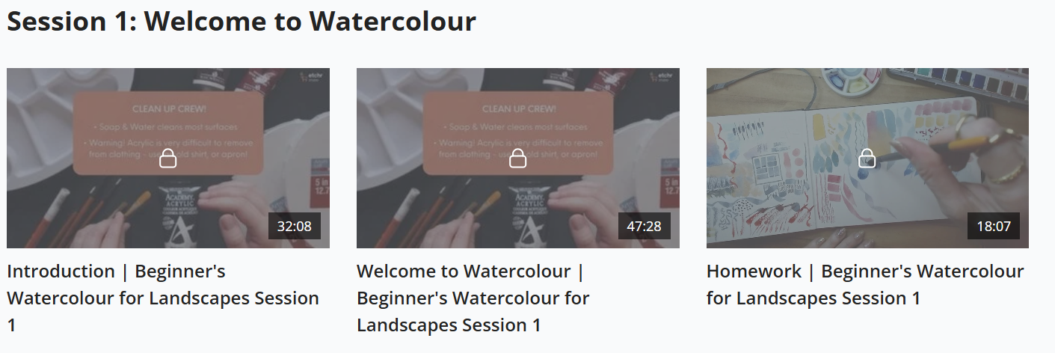
There are 3 main types of video paywall:
- Hard paywall: All of the content on the website is behind the paywall, and users need to pay to access it.
- Soft paywall: Also known as a metered paywall, this gives people access to a preview or free trial, and then they need to pay to gain complete access.
- Freemium paywall: This works by offering a free version of your service, with options to add-on a paid subscription to access the full value. Spotify is a good example of this: you can use it for free but with limitations, or you can pay for a subscription for unlimited access without ads.
How a video paywall helps you take control of your content and revenue
The demand for streaming services is high, which is good news for you because it means there’s an audience out there who want to pay for your content. In fact, 90% of adults in the US regularly use a streaming platform to watch videos– which is a huge potential user-base!
A video paywall gives you freedom: to own your content, earn steady money, connect with your audience and create a branded experience.

Have ownership over your content
Setting up a video paywall means you’re taking control of what you publish, where, and when – because you’re monetizing directly from your customers.
Want to start your own streaming service like Netflix? Launch a video membership business? Live stream niche events to a paying audience? You can do all that with a video paywall.
Think of it like cutting out the middleman (like YouTube or traditional media publishers) and self publishing your content yourself. No more having to reach a certain number of views, adhere to a list of rules and guidelines or promoting products to your audience. Or being at the mercy of the algorithms that dictate what your users see on their screens.
Means TV is all about independence. They publish original content on their platform which is worker-owned, co-operatively run and supported by their viewers.
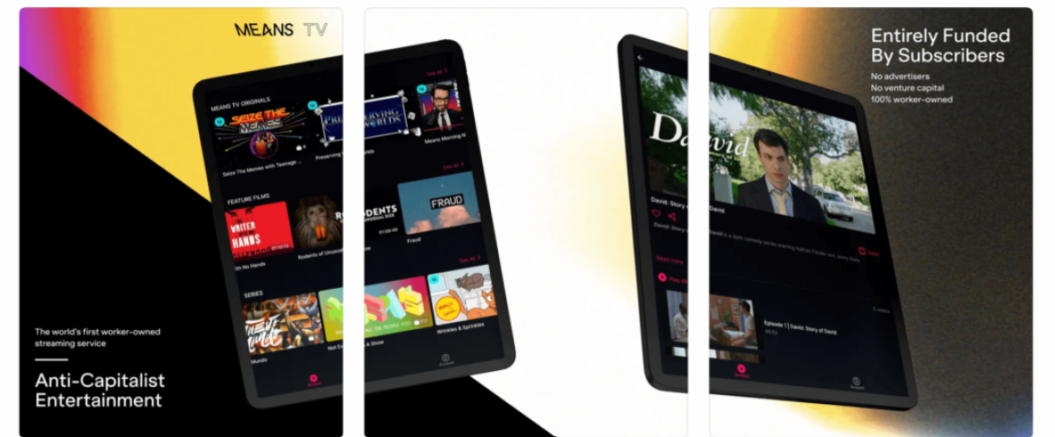
They’ve since gained $40K per month in revenue, launching mobile and TV apps to provide an accessible and high-quality user experience for their subscribers.
🥇Read the case study to learn how they did it.
Earn reliable, recurring revenue
At this stage in your video monetization journey, you’re likely feeling frustrated with unpredictable and unstable income from your content. A video paywall turns things around because you’re the one deciding what to charge, and you’re in control of what happens to that profit.
You can also choose what you want to offer your paying audience. You can stick to purely video content, or you can expand into building a community around it.
Nicole Wilde from Collective Kula started out sharing her yoga practice on YouTube. As her channel grew, her online community wanted to practice yoga with her more often and so the Collective Kula membership was born, with regular exclusive yoga sessions accessible behind the paywall:

The membership brings in $20K in monthly revenue with 640 active members.
Read the full story to find out how Nicole made the shift from sharing free videos on YouTube to a successful yoga membership that makes real, reliable revenue.
Boost engagement and form real connections with your audience
If someone’s paying for your content; they want to be there and chances are, they like you and what you do (otherwise they’d be subscribing to someone else’s stuff).
You have the opportunity to make this work for you by creating your own community. This gives your premium audience a private online space where they can connect with you and each other, and makes them want to keep coming back (and continue to part with their hard-earned cash).
Say you’re teaching people a skill or sharing your own expert knowledge in your videos. A community is the perfect complement to this because it gives your members a place to talk about the topics you cover, ask questions, and share their own progress.
This is central to the success of Your Saltwater Guide. Founder, Dave Hansen, shares his passion and knowledge of fishing through the membership and has created a tightknit community as a result.
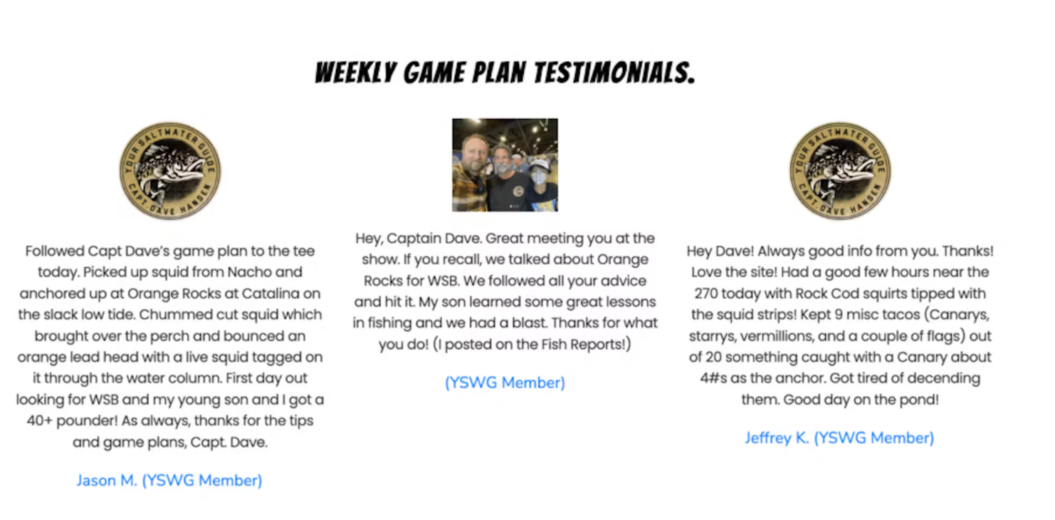
The testimonials from current members are a large part of what drives new users to sign up for the free trial, and then stay to be part of this unique community.
Read more on the power of community and how it has created a successful membership business for Your Saltwater Guide.
Unlock your potential and set yourself up for success
Setting up a video paywall gives you the freedom to customize your offering and really make it feel like your brand. It’s the difference between having a channel on YouTube and having your own website and apps that you have full ownership and control over.
People pay for premium content because it’s more convenient, and offers a better experience where they know they’re getting something valuable not just for their money, but for their time. Subscription services are a familiar part of our daily lives, and that level of user experience is something we’ve come to expect as consumers, so it makes sense to meet that expectation.
Like Fittest Core’s branded apps which offer a range of features to keep members engaged with easy access to the content:
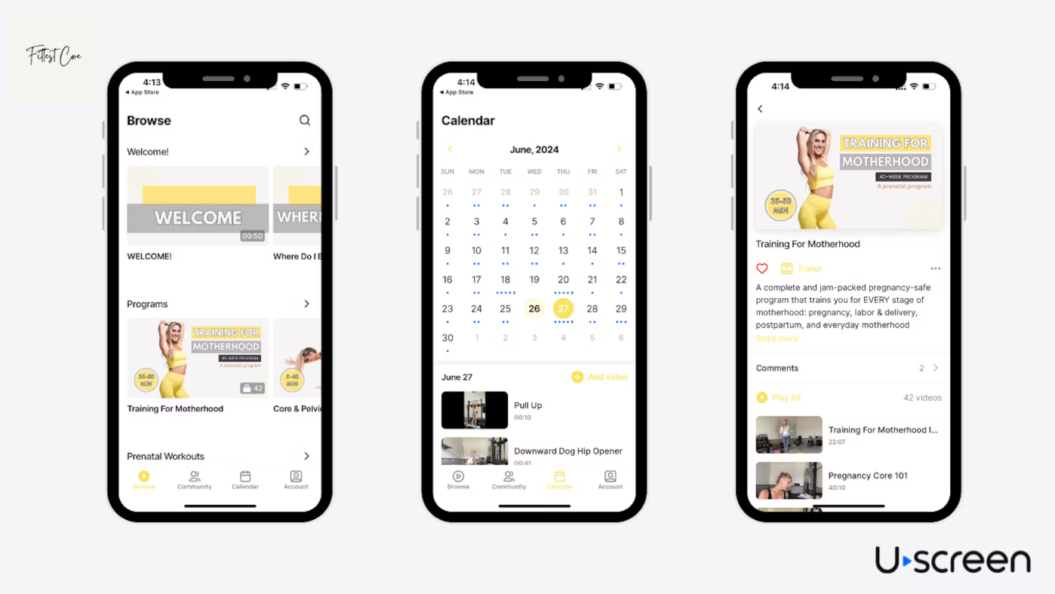
With Uscreen, I love using the app. It’s easy to navigate, and I always see new notifications and interactions from members. I check the community several times a day and personally answer questions, making sure I’m not missing anything my members need.
Macy Pruett, Founder of Fittest Core
How to create your own video paywall and start earning directly from your audience
We’ve talked about the benefits of a video paywall, but how exactly do you set one up? Let’s go through it step by step!
1. Decide how you want to monetize your videos
The first step is to plan how you want your video paywall to work. Essentially this comes down to what kind of service you’re offering– one-off payments in exchange for a collection of videos? Or a recurring subscription for unlimited on-demand access to a full library?
Let’s dive into each monetization model and what they look like.
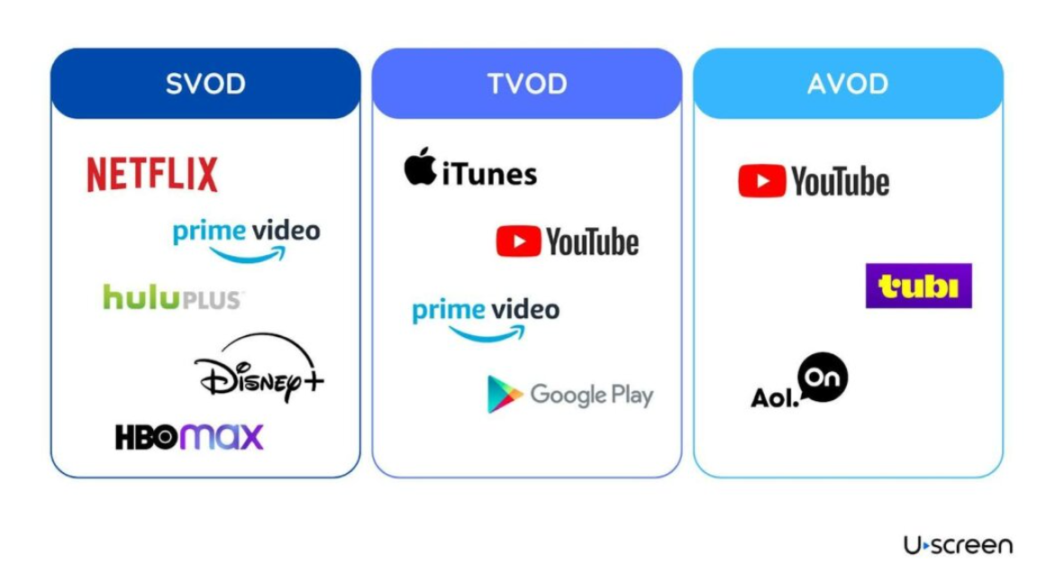
SVOD: for subscriptions
SVOD stands for subscription video on demand. It’s a monetization model where users pay a recurring fee, typically monthly or annually, for unlimited access to a library of content like films, TV shows, and more. This is essentially the business model behind a lot of the well-known streaming services out there like Netflix and Disney Plus.
Here’s a more niche example from NextUp Comedy:

TVOD: one-off purchases
TVOD, or transactional video-on-demand, is based on a pay-per-view system, where viewers can purchase content they choose to watch on a one-time basis. This could be film purchases and rentals, or courses and video packages. Like the digital sets available from Pageant’s Live:

AVOD: advertising supported content
Advertising video on demand gives users free access to video content in exchange for watching ads. The best example of this is YouTube. As the content creator, you make money from the advertising revenue but this all depends on how the ads perform in your videos.
Here’s an example of a sponsored ad on the Art for Kids Hub channel:
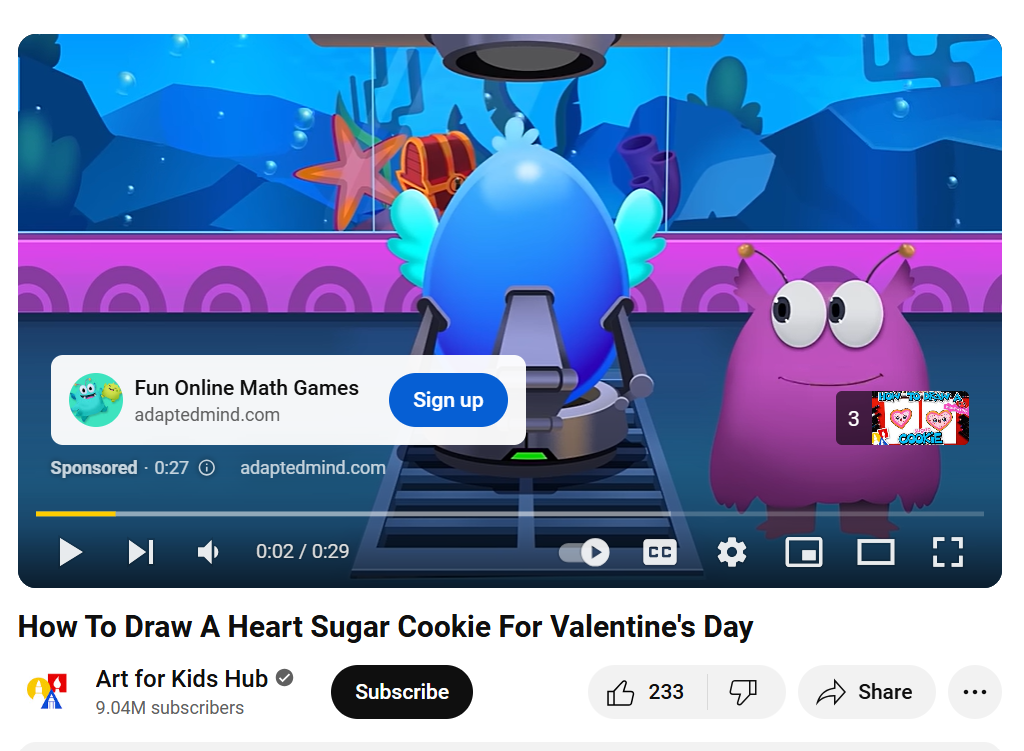
The downside to this model is, as the viewer, I’d need to watch that ad for at least 30 seconds for it to generate any revenue for them. So your ability to earn from ads depends on viewer behaviour and engagement.
Membership model
A membership is similar to the SVOD model, but it adds one essential element– community. All this means is you’re adding additional value to your audience beyond just content. It’s a smart way for you to form a real connection with members and increase retention (our customers have experienced a 50% increase in retention by adding community to their membership– so we know this works!)
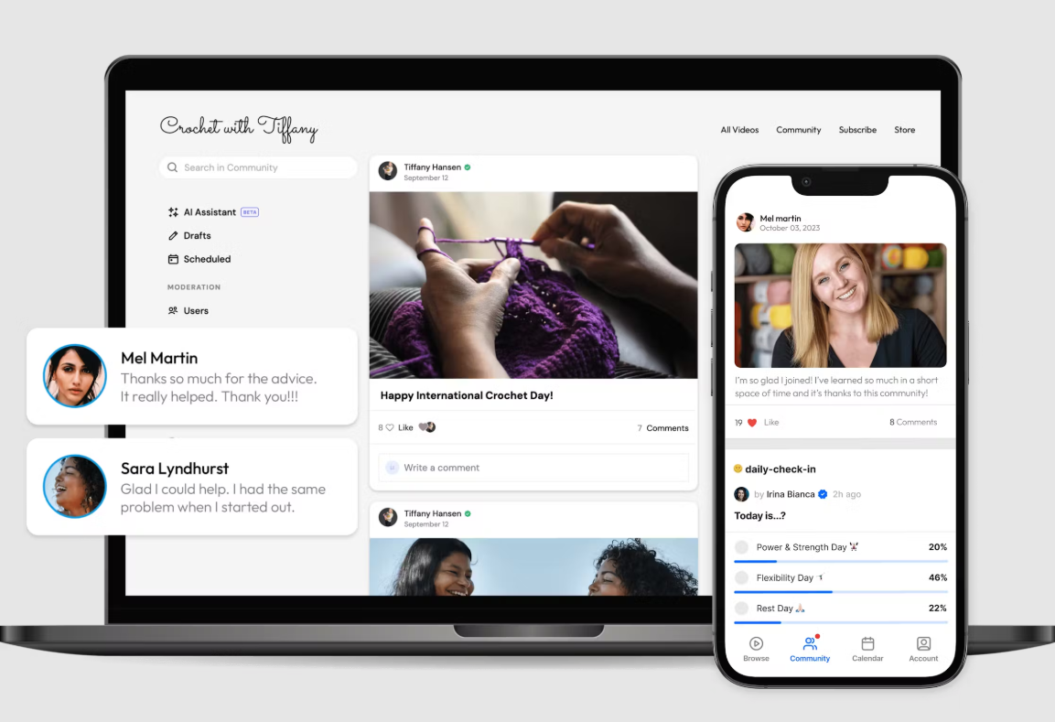
Hybrid
There’s no obligation to stick to just one monetization model either. You can offer multiple options to cater to different audience needs and preferences. For example, Fittest Core offers a combination of membership access and TVOD.
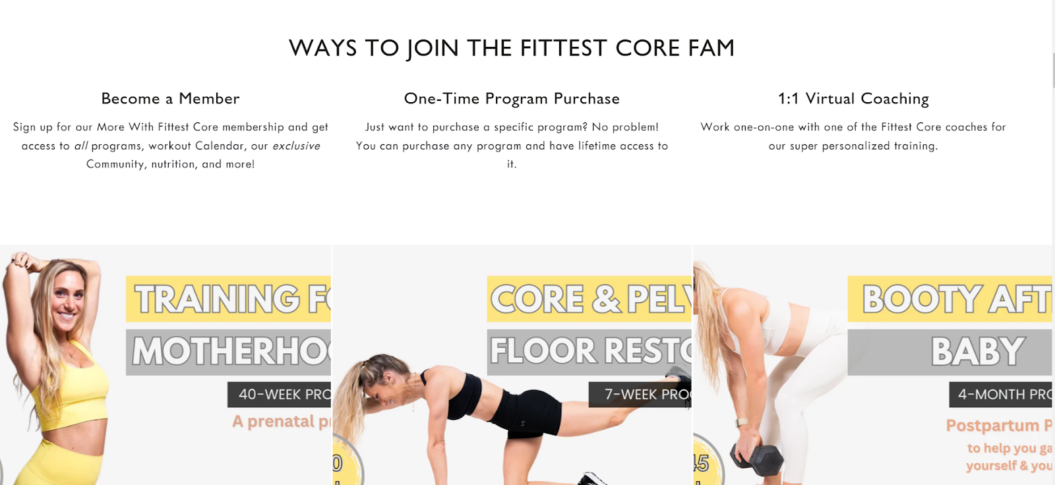
2. Set your pricing
How much should I charge? It’s a common sticking point at this stage– you don’t want to charge too much and risk putting people off, but charging too little can hurt your business.
Let’s take a look at the 4 main pricing models for video content to find what’s going to suit you best.
1. Flat-rate, fixed price
The flat-rate model is the most straightforward pricing strategy. It involves charging a single, fixed fee for access to all content and benefits. It’s ideal for creators who offer a consistent stream of content or services and wish to maintain simplicity in their pricing structure.
2. Tiered pricing
The tiered pricing model segments membership into different levels, each with its own price and set of benefits. This approach is highly effective for creators who offer a diverse range of content and services and wish to cater to different audience segments.
Here’s an example of this in action from Abundance Plus, which offers different prices for varying levels of interest and budget:

For smaller creators, consider introducing tiered pricing as it can improve the value you offer without alienating your existing members. Think of it as not just selling more, but offering more — be it exclusive content, special access to you as the creator, or unique community features.
3. Pay-per-view
In the pay-per-view model, audiences pay for individual pieces of content rather than a blanket subscription. This model suits creators who produce high-value, specialized content or occasional premium content that is not part of their regular offerings.
Here’s an example of a one-off bundle by Your Saltwater Guide:
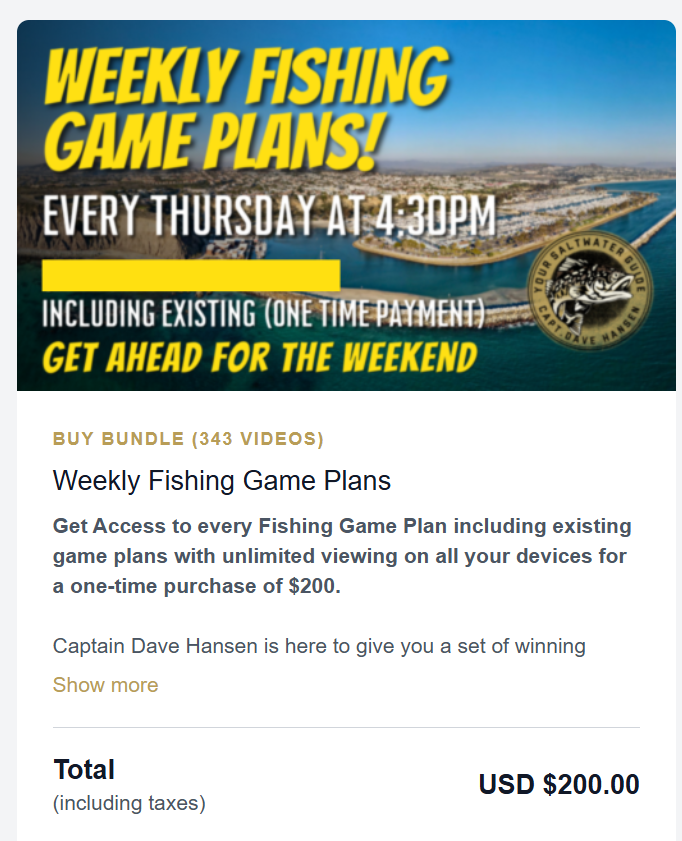
We wanted to make sure Dave got the full value for his knowledge… The bundles are a way of securing that knowledge and information and attributing the value to it.
Eliot Andrews, Marketing Lead at Your Saltwater Guide
4. Donations
The donation-based model, also known as participatory pricing, is a flexible approach where members are encouraged to pay what they can or want. This model is often employed by creators who have a strong community connection and rely on the goodwill and support of their audience.
An example of this model is Wild Goose TV. They are a non-profit faith based organization who provide free access to their video catalog with an option for followers to donate and support their work. As an incentive, they offer donation tiers which provides perks for people who donate:
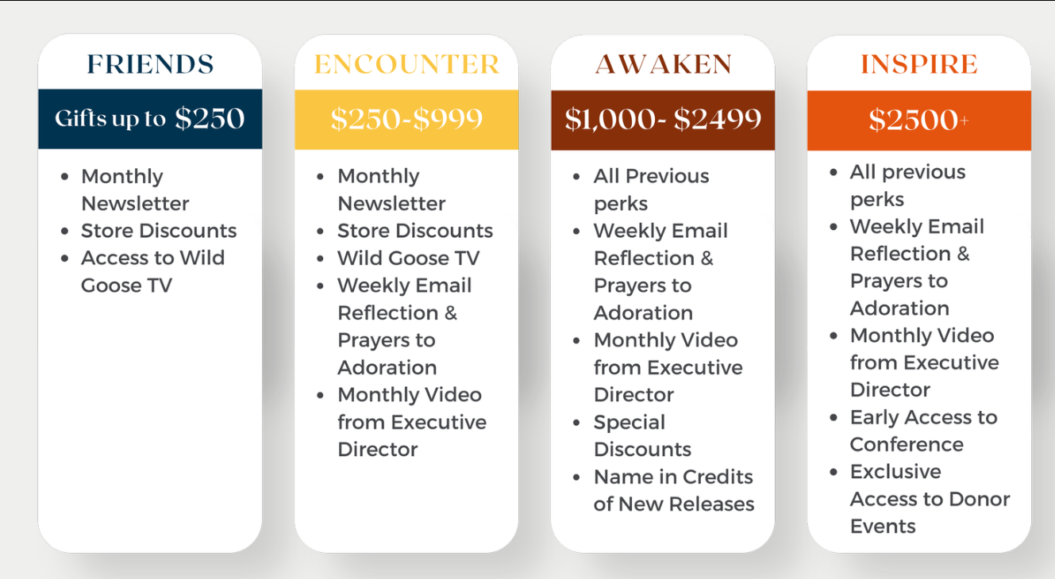
👉Try our membership pricing tool which calculates your ideal price for you in just three quick steps.
3. Choose a video platform to host your content
A video platform is a service you pay for to host your video content and monetize it through a video paywall. An all-in-one video platform like Uscreen gives you all the tools you need to create your own video subscription (or pay-per-view) website – like a website builder, video catalog, high quality video player, mobile and TV apps, built-in community, and marketing tools.
It varies from one platform to another which features you get and how much it costs, so it’s important to take the time to compare them to find what’s best for you; as it will depend on your goals, current budget, and audience size.
Luckily, we’ve done the hard work for you already and rounded up the 7 best platforms to sell videos online in 2025.
Or, check out our alternatives lists if you’d rather see what the next step up is from YouTube or Patreon so you can weigh up your options.
The key features you should look for include:
- Flexible monetization: Ideally you want multiple options to charge for access to your content, like SVOD, TVOD or advertising, to meet the needs of your audience.
- Customizable video catalog: This is important because you want to be able to categorize your videos and make your content library easy to navigate which is key for your viewers’ experience.
- Payment processors: This is essential for supporting secure payments from your users. Look out for platforms that support multiple currencies and payment options.
- Mobile and TV apps: Look for options to expand into your own streaming apps. Our data shows that Uscreen customers with apps have a 25% increase in watch time, with 50% of live streams accessed from their apps.
- Live streaming: Live streaming is a great way to add value to your offering, whether it’s a one-off event, regular class, or one-on-one coaching session.
4. Create an outstanding user experience
Now that you’re clear on the money side of things, let’s talk about what happens behind the paywall to create the best possible experience for your audience.
Put yourself in the shoes of your ideal audience. What do you ideally want to see here? What would hook you to keep coming back?
The answer to this depends on what you’re offering. If your videos are purely for entertainment, then a well-stocked library of high quality, original content with regular new releases is a must. Plus, think about the way you consume this type of content. Meeting your audience where they’re at by offering TV and mobile apps makes it a convenient, enjoyable experience.
If you’re a fitness instructor, or your niche involves sharing your knowledge to help people learn new skills and grow in their personal and professional lives, then offering a built-in community for discussion forums adds the extra touch to help them get the most out of your content. Being available to answer questions and motivate your members with regular check-ins or challenges makes it a shared experience, helping to embed the service into their daily lives.
Think of a couple of things that you can build the year around that adds value in different ways and pulls people into your bubble of your community, network and membership. Plan that in advance, build those experiences and then evolve from there.
5. Launch your video site and keep shouting about it
The final stage is getting ready to launch your video on demand site. Before you hit publish, take some time to plan your launch in advance.
Tell your followers on social media to get them hopped up in anticipation for launch day, set up a waiting list for early-bird subscribers, and keep spreading the word about your video service (especially where your target audience is most likely to see it).
Each different channel is going to serve its own purpose for promoting your membership. YouTube is a great channel for sharing top of funnel video content to draw people in. It really depends on where your audience is – which is the key to using social media effectively. Identify which channels they use, and that’s where you should be.
💡Milou shares her expert advice on how to funnel people into your membership in 6 steps. Check out her article for in depth advice on your launch strategy.
Common video paywall challenges and how to overcome them
We’ve gathered expert insights on how to successfully navigate 3 common challenges: balancing your paid offer with your free content, communicating the value of your paid content, and how to keep your paying audience coming back for more.
1. Finding the right balance between free and paid-for content
Charging for your video content doesn’t mean you need to stop posting on your YouTube channel. In fact, you can use it as a sales funnel to convert followers into paid members.
The ‘funnel’ simply means the different stages someone goes through from when they first discover you. Kylie Julien, Senior Video Production Specialist here at Uscreen shares her advice on how to do this:
- Top of funnel: creating awareness content to answer common questions the people in your niche might have, like how to correctly do a push up. Aim for 40% of your content to cover this stage.
- Middle of funnel: focus on topics that are interesting to followers who are already familiar with you. Like sharing your own favourite yoga props. The next 40% of your YouTube content should target followers at this stage.
- Bottom of funnel: this is known as conversion content where you directly promote your video membership or subscription. This should make up 20% of your YouTube content.
The key is to share quick wins, or simple, easy tips for ‘free’ and then share the real value behind your video paywall.
Smart creators know that you need to build a bridge between every step that your audience takes, including going from watching a video and clicking a link.
2. Communicating the value of your paid-for content vs what you offer for free
This is a common hurdle creators might face when they first start putting their content behind a paywall. It’s easy for self-doubt to creep in and start asking you ‘why would someone pay for access when I give stuff away for free on YouTube?’
Firstly, let’s address that doubt by remembering that people value what they pay for. It’s known as sunk cost fallacy and it’s the desire to get your money’s worth.
Imagine you had saved a bunch of insightful sounding podcasts to your YouTube playlist to watch later. But you also have access to a premium subscription which delivers content on a similar topic in a structured order to help you get the most out of it, and that same service has dozens of glowing reviews from people like you who have overcome the same challenge you have.
Which one are you most likely to get around to?
Now, to turn this into a real action you can take, all you need to do is communicate the value of your paid content and how it benefits your niche audience. In other words, what they’re going to get out of it.
Jade Beason shares her expert advice on getting your messaging right by ensuring it answers these core questions:
- Is this product or service the right fit for me?
- Can I find this kind of value elsewhere?
- Will this get me closer to my desired outcome?
Check out her article on how to craft membership messaging that converts for a deeper dive into how to get this right.
5 Lead Magnet Strategies That Actually Convert for Membership Owners

3. Getting your subscribers to stick around for the long haul
So, you’ve got people signing up and paying for your content, great! Now how do you make sure they stay and keep paying for a subscription?
Reducing churn starts at the very beginning as soon as they become a paying member… every positive interaction you have with a customer adds time to their clock.
Maximizing retention starts from the moment your users sign up. Give them a clear path to follow, sign post which videos to start with and create a welcome post in your community (if you have one) and keep promoting engagement in those early days.
Another strategy which we’ve found to be successful is to offer an annual subscription, which is proven to boost membership retention above a monthly subscription plan:
The biggest common error is blending your monthly and your annual members into the same bucket. Monthly churn rates generally tend to be 3x to 4x higher than annual churn rates.
Above all else, make sure you’re continually adding value to your users’ experience by regularly adding fresh content, regularly engaging with them through your community and communicating upcoming new releases or events.
FAQs: commonly asked questions about video paywalls
A video paywall is a digital gateway that restricts access to premium video content, allowing only those who have subscribed or paid a fee to view it.
At Uscreen, we see a video paywall not just as a barrier but as a bridge connecting creators with their most dedicated fans, enabling creators to monetize their passion and viewers to access exclusive, high-quality content. It’s about fostering a community where value is exchanged seamlessly, ensuring creators are compensated for their work while providing fans with enriching, engaging content that resonates.
A paywall acts as a gate, requiring viewers to make a one-time payment or subscribe to pass through and access premium content. It’s the first step towards unlocking exclusive material. On the other hand, a subscription is an ongoing relationship, where viewers pay regularly to maintain access to content they love, often enjoying a broader range of features, updates, and community engagement.
While a paywall initiates the journey, a subscription deepens the connection between creators and their audience, fostering a thriving community around shared passions and interests.
You can add a paywall to your website using a dedicated video platform where you can create your own Netflix-style video catalog.
You can’t implement your own paywall on YouTube. To have full control over monetizing your videos using a paywall, you’ll need to take them off YouTube onto another platform.
You can paywall a live stream in the same way as video on demand content– by using a platform that supports live streaming with flexible monetization options.







